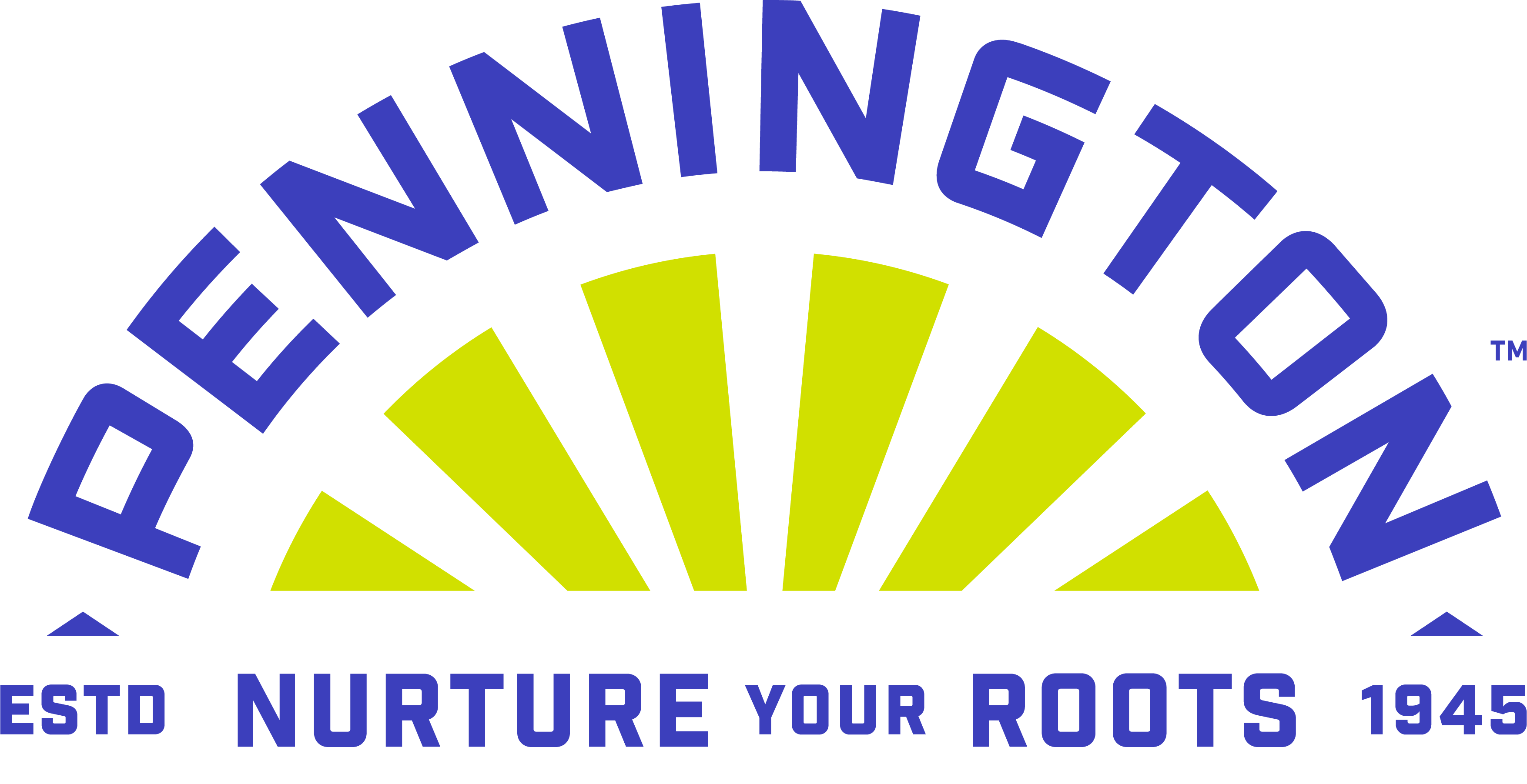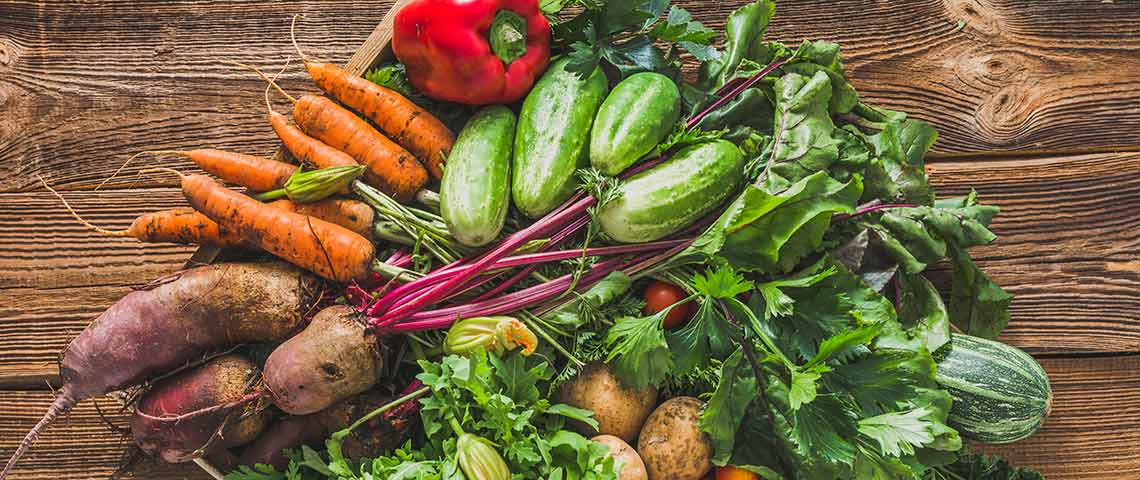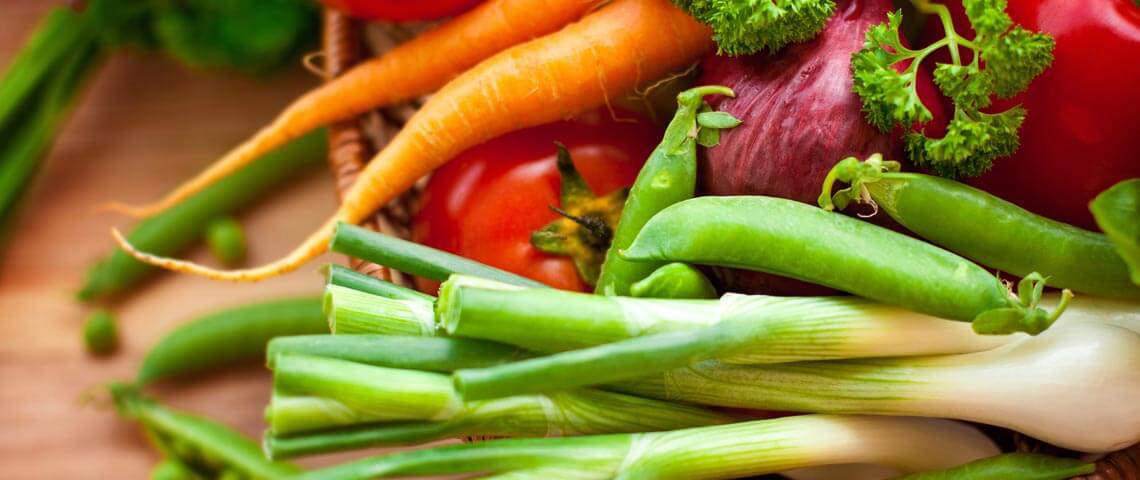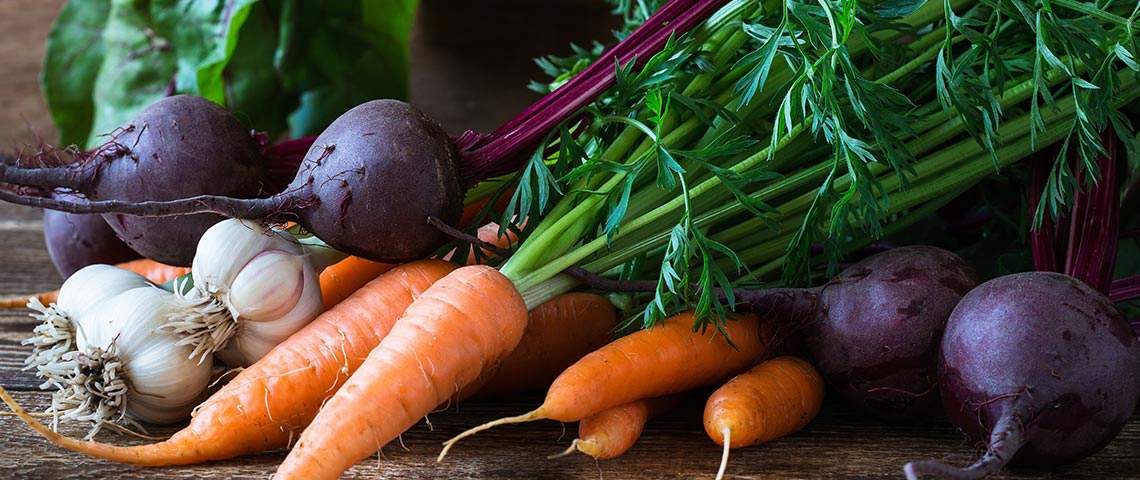How to Grow Edible Plants in Containers
Everyone knows you need a huge yard and lots of space to grow your own food, right? Wrong! You can grow your own vegetables, fruits and herbs in containers this summer, no matter how small your space is.
With food grown in pots, you can enjoy all the benefits of homegrown food, from nutrition to lower food costs, whether your garden is a patio, a balcony or a window box. And if you do have a big yard with room to run, you can still grow your own food in pots. Here's how.
- Match Edible Plants and Containers
- Choose the Best Soil for Growing Food in Pots
- Maximize Sunlight for Your Edible Crops
- Water Container-Grown Food Consistently
- Fertilize Container Crops for Bigger Harvest
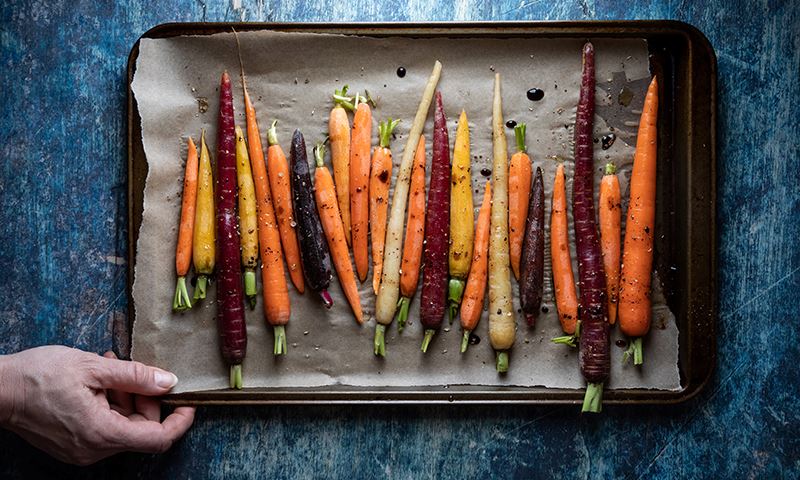
Container-grown roasted rainbow carrots? Yes, please!
Match Edible Plants and Containers
Growing food-producing plants in container gardens is pretty simple if you get started right. Most vegetables, fruits and herbs flourish in containers as long as their roots have plenty of room to grow.
The shape of your pot doesn't matter — round, rectangular, octagonal — but, as you probably guessed, the bigger your container, the bigger the plants it can hold. That's why matching your pots to your plants is where we start.
If you want to grow your own lettuce and leafy greens for salads, smaller containers will do. Shallow-rooted crops like our Pennington Organic All Lettuce Mix do well in pots at least 6 to 8 inches deep. (You can even tuck your greens into ornamental containers or hanging baskets in your vertical garden, along with some edible flowers, if you like.)
But if you want to grow homegrown tomatoes or hot peppers that make your toes curl, start with a container at least 12 inches wide and deep — even if you're growing smaller dwarf varieties. The same holds true for root crops like our Pennington Organic Colorful Rainbow Carrot Mix. Give those roots plenty of room — unless crooked carrots are your thing.
Whatever pots you pick, make sure they have plenty of drainage holes. Almost universally, your favorite vegetables, fruits and herbs won't tolerate soggy roots. So don't skimp on drainage. And always think ahead; stick with manageable container sizes and weights.
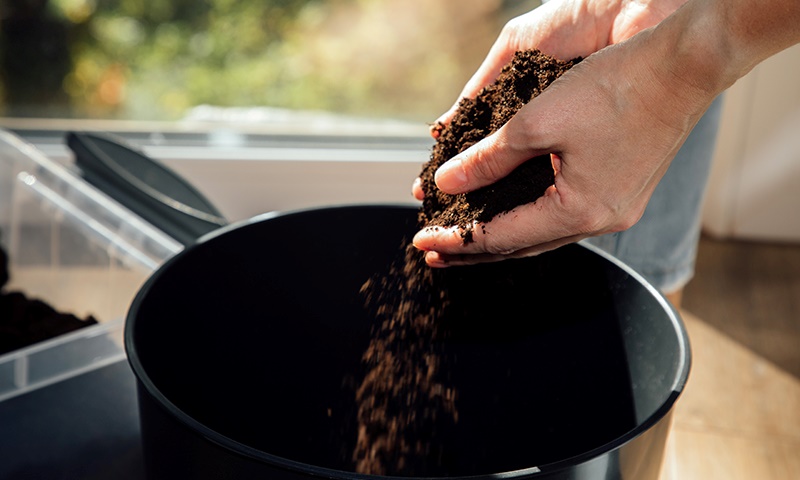
Skip heavy garden soil and use a mix designed for pots.
Choose the Best Soil for Growing Food in Pots
Regular garden soil, like you find in your yard, is much too heavy for container growing, whether you're growing food, flowers or both. Your pots will be heavier and harder to handle, plus your edible container plants may have a tough time pushing roots in heavier, more compacted soil. Drainage can be a problem with heavy garden soil, too.
So, skip the guesswork and the problems and go straight to a potting soil mix designed especially for containers and other above-ground gardens. Instead of heavy, root-restricting soil, you can give your food crops soil that improves nutrient uptake. Last but not least, premium potting mixes often have water-holding crystals to help optimize your water use. So they're good for you, your food crops and the environment, too.
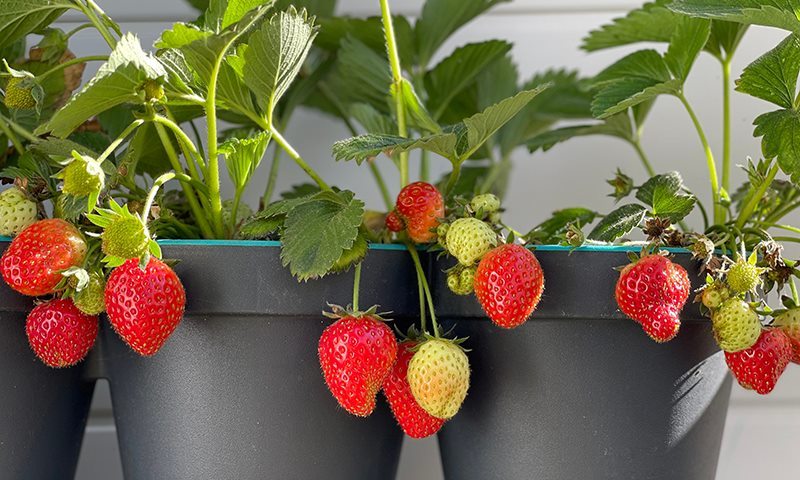
More sun = More balcony berries for breakfast (and multiple snacks).
Maximize Sunlight for Your Edible Crops
Most vegetables and fruits — almost all of them — produce bigger, better crops when they get lots of sun. Cool-season crops, like lettuce and organic dinosaur kale, appreciate some shade against intense afternoon sun.
For the rest of your container food crops, from vining strawberries to trellised melons, more sun means more fruits and veggies for you. The same holds true if you're growing culinary herbs, including rosemary and lavender, to maximize aromas and flavor.
If possible, place your container food gardens where they'll get at least 6 to 8 hours of full direct sun each day. The more, the better. Remember, hummingbirds and other pollinators love sun, too! The more they pollinate, the better your harvest of homegrown food.
If needed, you can move your pots and follow the sun as it moves, from morning to night or month to month. If your gardening space is sun-challenged or you just have some big pots in mind, invest in a plant dolly. Rolling pots around on wheels beats lifting them any day!

Regular watering keeps potted veggies firm and juicy.
Water Container-Grown Food Consistently
If this is your first time growing plants in containers, pay extra attention to this part: Soil in containers dries out faster than plants in the ground. The smaller your container, the faster it will dry out when exposed to sun and wind. Breathable pots, like terra cotta, will dry out faster than plastic ones.
Whatever pots you choose, growing food in containers means more frequent watering on your part. Consistent, sufficient water is essential for firm, juicy veggies and fruits. (Trust us. Unless they're intentionally sundried, you don't want dried-out tomatoes on your menu.)
During summer months, you'll most likely need to water your container food gardens every day. The key is to water your soil thoroughly every time you do. If you take time to check the container soil before you water, you'll quickly get a feel for moisture levels below the surface, out of sight.
To really get to know your garden, just stick your index finger down about three inches deep. If it doesn't feel moist and cool, it's time to water. Water your container soil thoroughly so all the roots get the water they need. If you use saucers underneath your pots, empty any excess water that accumulates.
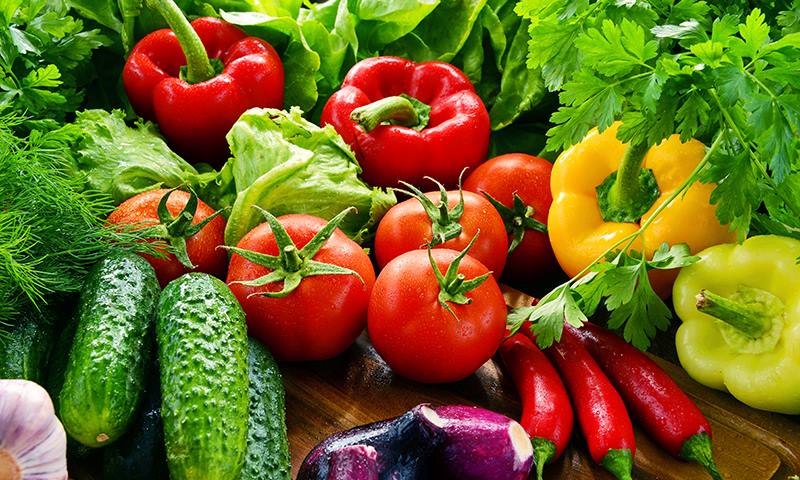
Well-fed container edibles deliver bigger, better harvests.
Fertilize Container Crops for Bigger Harvest
Feeding your edible plants is especially important when you use containers to grow your own vegetables and fruits. First, veggies are heavy feeders. You don't get big, bountiful crops without good food. Second, container gardens have a limited amount of soil, so soil nutrients need to be replaced as the season rolls on. When you water frequently, nutrients can be lost even sooner.
To give your container-grown food the best possible start, mix some fertilizer into your potting soil mix at planting time. An all-purpose premium fertilizer provides a great foundation for your container crops, especially lettuce, herbs and root crops. For veggies and fruit-bearing plants, fertilizers designed for fruits and vegetables help your crops grow bigger and more bountiful.
Keep your containers well-fed through the growing season, and they'll return the favor with more tasty produce. Pennington Water Soluble All-Purpose Plant Food 20-10-20 makes it easy (right down to the measuring scoop inside). Just follow the label instructions and add the food to your watering can every 7 to 14 days to instantly feed your plants and trigger bigger, more bountiful fruits and blooms.
By growing your own food in containers this summer — even in a tiny space — you can enjoy fresh, nutritious, homegrown food. Plus, it just feels good! We're here to help you nurture your roots and make garden dreams come true. Have questions about gardens, plants or gardening? We have answers. We're Pennington, and we'd love to hear from you.
